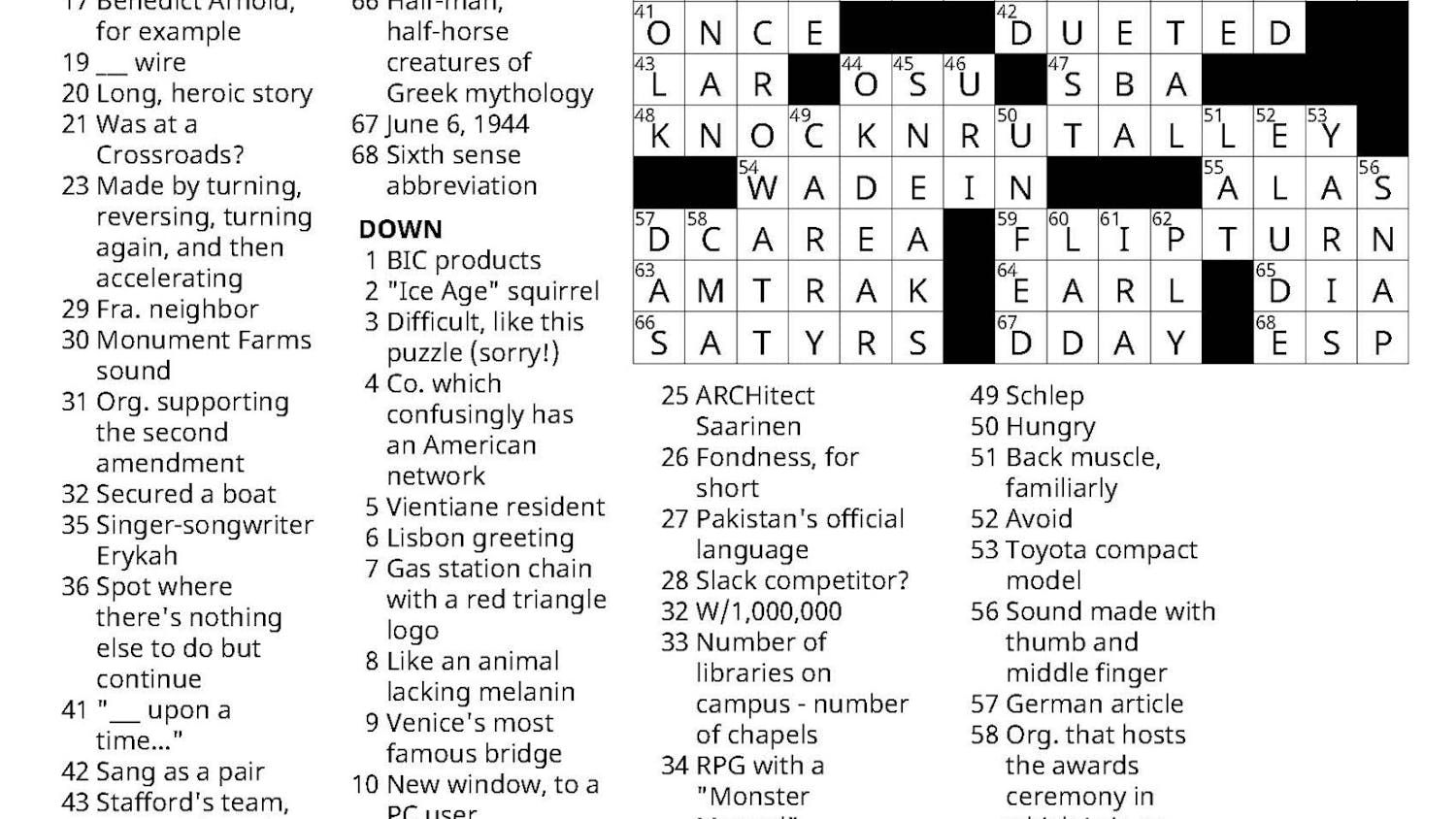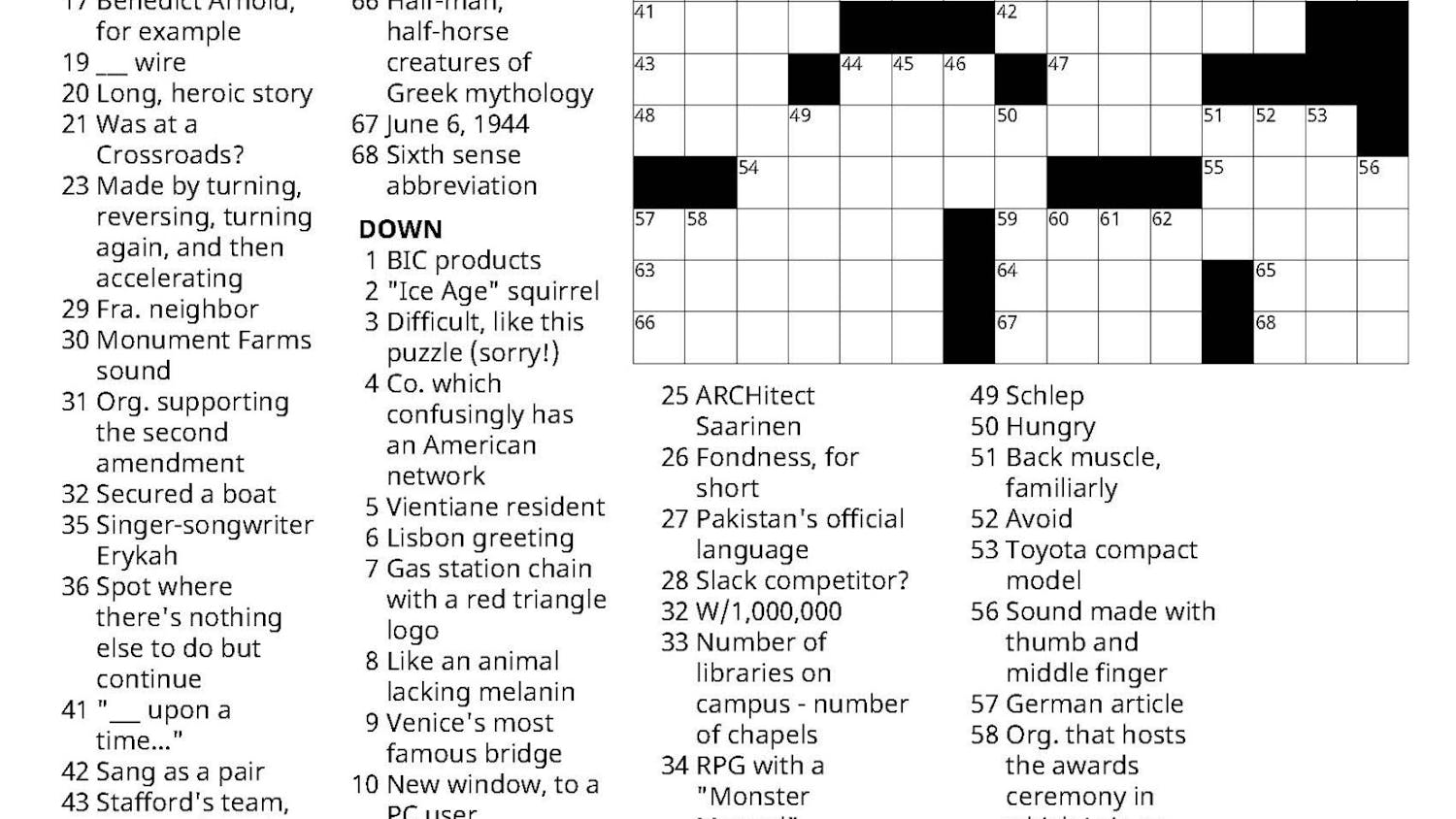In the most recent installment of the Performing Arts Series, Middlebury College played host to Tamar Rogoff’s Diagnosis of a Faun. The piece focuses on a fantastic reinterpretation of the classical figure of the faun — a satyr with the aspects of both man and goat. It arrives at the interdisciplinary crossroads of dance, theatre and medicine from a two-year genesis of intensive cooperation between Rogoff and actor-cum-dancer Gregg Mozgala, who inspires and assumes the role of Faun.
Mozgala was born with cerebral palsy, which results in abnormal and incapacitating tension in the muscles of the lower half of his body. Two years ago, he could not take a step; with extensive and almost daily work with Rogoff, he can now both walk and dance. Rogoff approached him to work with her as a dancer after seeing him star in a New York production of Romeo and Juliet.

“You never know on what level you’re operating as an artist,” she said. “Perhaps I was already thinking about his body intelligence, but what came across on a conscious level was how he played Romeo. Something just drew me to him.”
His body image upon their initial meeting became an allegory for the divided nature of a faun and lent a certain dualism to the piece’s arrangement and evolution. Mozgala plays a figure of mischief and hedonism incarnate. The piece’s structure is dictated by the division of the stage into two realms — a kind of pastoral Neverland and the opposing sterile Reality — and Mozgala’s consistent transgression of that boundary.
It would, however, be a mistake to limit interpretation of the piece to chronicling a recovery, even though that is part of its essence. To do so would be to resolve it, to give it both explanation and reason. And since the task of artistic expression is to evoke feeling in response to the insolvable, art explained defeats its own purpose. Diagnosis of a Faun should be neither considered a work about cerebral palsy nor measured with standards altered in light of the disease. It must be taken as a work of creation built upon myriad elements and influences. This reality serves as a foundation, rather than a restriction.
Immediately necessary to the piece’s interpretation is an understanding of Rogoff’s choreographic approach: a technique of her own development and design called Body Scripting, in which movement derives from the directed articulation of a part of the body through space. It exists in sharp contrast to the average non-dancer’s idea of dance: the derivation of movement through imitation of a visual technique. Instead of directing her dancers in terms of how they should look, Rogoff focuses on what they should feel, and in doing so ensures that the movement is internally rather than externally sourced. To her “it’s [a] more clear and direct … process,” because “everyone knows where they’re supposed to focus.”
Another strength of the piece is its sense of humor, used with such a facility as to command universality. It not only allows the watcher access to every part and player in the work that may, at first, seem foreign — the eccentric nonverbal Faun and his sporadic braying, the self-conscious perfection of the ideal ballerina and the pointed sterility of the medical world inhabited by Dr. A and Dr. B — but further allows them to access each other in a dialogue of dynamic movement.
These disparate parts are created in caricatures that are both comic in self-reference and tenderly faithful to their inspirations; Dr. A, for example, is played by physician Donald Kollisch, who had received no training in dance before the piece. His role initially represents the uncompromising restraint of the medical field. But his exchanges with the ballerina — and later the Faun — are exercises in contrast that result in laugh-aloud visual comedy, without seeming patronizing.
The part of Dr. B, played by Emily Pope-Blackman further exacts this contrast. A skilled dancer, Pope-Blackman moves with a quality so naturally balletic it seems reflexive; dressed in a Doctor’s coat and the suit of a professional, it makes her transition into the Faun’s realm and erotic embrace almost organic, as if it were already somewhere in her nature, lying latent beneath a white lab coat and in wait of a Faun. Her performance is technically impressive by any standard, but it is secondary to her arrestingly intuitive kinetic movement.
Equally astounding is the exacting performance of Lucie Baker, a trained dancer playing the part of the ultimate Prima Ballerina. She also makes a transition into the Faun’s realm, a union whose possibility is presented at the piece’s beginning and whose consummation heralds its dénouement: in this final duet, Rogoff’s choreography shines in the reciprocity between them. Baker’s fluid grace lends tenderness to the Faun, and in return his energy enlivens her. This is perhaps the truest moment of boundary dissolution, when it seems that not only the Faun effects change on the careful order of the real world, but that he has changed, grown in a way that is almost imperceptible. It is felt unconsciously by the audience, most especially in a few specific moments of breathtakingly evocative movement.
The figure of the Faun is approached differently. Mozgala sources his character from a place apart from the two classically trained dancers. In him, the Faun comes to life in movement that is lyrical and raw, at once playful and purposefully articulated. The tone he sets is definitely theatrical — complete with breaths directing the movements of his fellow performers — but is supported by the naturalism of his movement in a manner that renders the combination performative rather than contrived. It is as if he is accessing the dance through the medium of the character, rather than expressing the character primarily through dance. This is another strength of the piece: in the same way that Dr. Kollisch’s occupational background elicits a kind of dramatic irony, Mozgala’s theatricality is a breath of fresh air that inspires grounding in the fantasy inherent to Diagnosis of a Faun.
Perhaps most elemental to the piece is its treatment of transition. Undoubtedly, this echoes Mozagala’s personal journey through the process of its production. But it is necessarily more than that. There is a visibly dynamic quality to Diagnosis of a Faun so that it appears as if each movement is being discovered and rediscovered by the body upon performance. It seems fitting in the most Dionysian of ways: a constant corporeal rebirth of an immortal in the body of a man.
Diagnosis of a Faun
Comments



